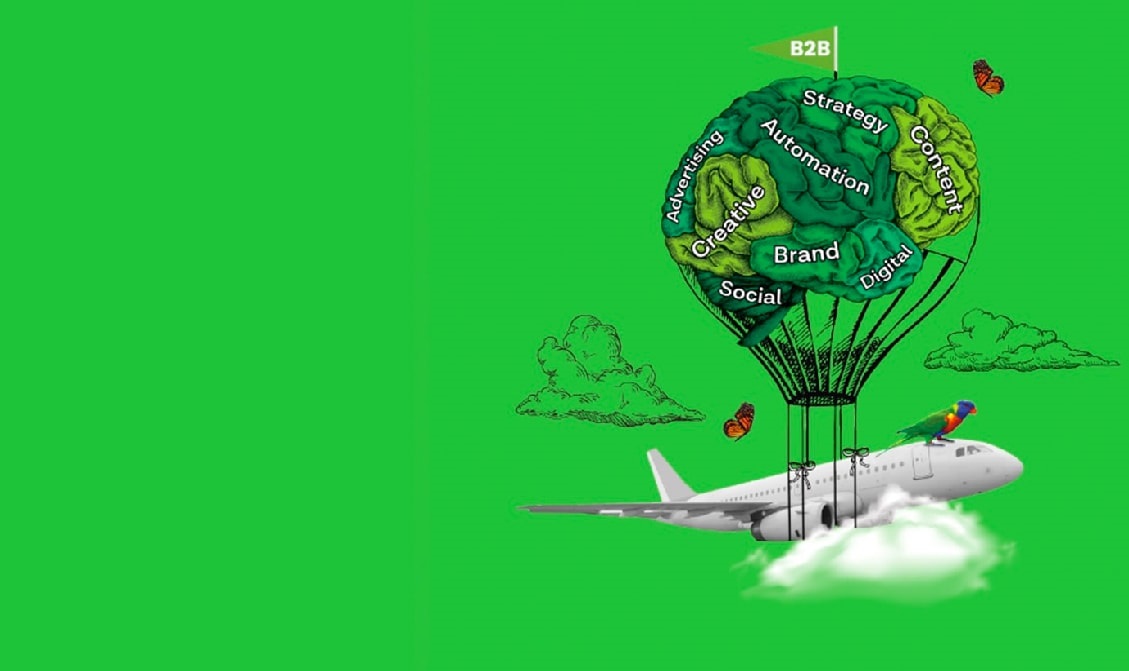B2B marketers should invest in marketing automation technologies for three simple reasons: providing a great customer experience, growing your business in an efficient and automated way, and streamlining processes to make your life easier.
1. Provide a great customer experience
The most important reason to automate marketing is because the key to any successful business is providing a top-notch customer experience. In the past, purchasing decisions were typically made on factors such as price and product. By 2020, it’s predicted that customer experience will overtake both price and product in the buying decision process.
Here are some simple ways to improve customer experience by automating your marketing:
Segmentation
Stop mass marketing! Most businesses already have an established database full of useful information about their customers. This has probably been gathered through the CRM, ERP or past marketing activities. Instead of waiting for this data to go cold and become invalid, segment contacts using demographic and behavioural data. New product launch? Use historical purchasing data to target those who might be interested. An event in Sydney? Only target local prospects.
Personalisation and enablement
Use what you know about your contacts to provide a personalised experience. Have you considered using dynamic content? Some good examples include dynamic banners based on industry sector, dynamic CTAs based on location, or dynamic content based on job role. There’s nothing more frustrating than receiving emails about something completely irrelevant to my situation. So, respect your contacts and ask them what they want to hear about. A preference centre or regular Voice-of-Customer survey are great ways for your contacts to have their say. Just make sure you listen!
Timeliness
It’s all about sending the right message, to the right person, at the right time. It seems over-simple and outdated, but it’s true. Understand your customer’s buying journey and ensure you’re providing the correct resource at the correct time. If a prospect visits your website every day for a week, maybe it’s time to reach out? Just signed a new customer? Sounds like a good time to add them to your onboarding stream.
2. Grow your business
They say that the definition of insanity is trying the same thing over and over and expecting a different result. Automating marketing is not about sitting back, putting your feet up and watching the dollars roll in. It’s about driving efficiencies, improving processes, bettering customer experience, and making smarter and more informed decisions.
Ultimately, it is about generating revenue to grow your business:
Sales-ready leads
Many salespeople remember the bad old days when they’d be given an enormous Excel spreadsheet and told to start dialling. Luckily for them, marketing automation now allows us to use features such as lead scoring, behavioural data and suitability to ensure we’re focusing our Sales efforts on the right people and routing them through to the correct salesperson.
Fast track the buying journey
By clearly understanding the lifecycle of your customer, you can automate the types of content and offers delivered at each stage through automated nurturing. For those in the discovery phase, high-level content may be best. For those in the consideration phase, more informative and detailed content may be required. For those in the purchasing phase, consider a more personalised approach like a 1:1 email – it might be time to build a relationship.
Upsell/Cross-sell
Did you know that 80% of your revenue typically comes from existing customers? We so often focus our efforts on finding new customers. It’s an important part of the process, but consider the low hanging fruit for a moment: both sales knowledge and purchasing data can be extremely useful for upsell and cross-sell marketing opportunities. This is especially helpful in B2B because customers generally prefer to work with fewer businesses if they can.
3. Make your life easier
Let’s be honest… One of the main reasons for automating marketing is to make life easier! Here are just a few examples:
CRM integration
This is a big one. Integrating your CRM and Marketing Automation platform will help with:
- Visibility of lead/contact behaviour to the Sales team
- Data cleanliness
- Bridging the gap between Marketing and Sales
- Sales enablement and empowerment
- Lead generation
Trigger campaigns
Set up trigger campaigns ahead of time. For example, if someone downloads your whitepaper, an email is triggered with the link and some related content and contact details, should they feel the need to reach out.
Nurture
Don’t let your database grow cold. Automating the addition of contacts to a nurture campaign can keep your brand front of mind until a need arises.
Reduce costs
One of the main cited benefits of automated marketing is cost reduction. This cost-saving is the result of:
- Replicating and automating tasks which were once manual
- Smaller teams being able to achieve much more (improved productivity)
- Smarter decision making
- Customer retention
Scalability
Don’t reinvent the wheel each time. What worked well in the past? Use your data to make smart marketing decisions to clone successful campaigns and schedule them ahead of time.
It’s difficult to do intelligent, modern marketing without marketing automation of some sort – it’s just a matter of considering how sophisticated your marketing will be. For those who already have a marketing automation platform in place, hopefully, this blog highlighted some simple things you could be doing better. For those who are just starting out on their marketing automation journey, make sure you have a clearly-defined strategy in place first.
If you’d like to speak to us about your Marketing Automation options, please feel free to get in touch today.
.png)
 Marketing Automation
Marketing Automation Digital
Digital






